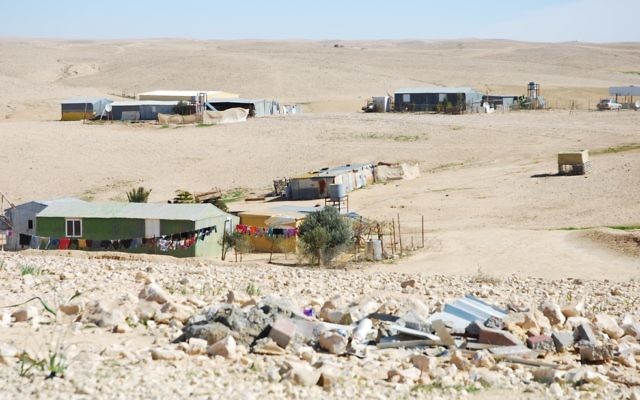Historic Roots of Bedouin Land Disputes in Negev
Israel has recently seen a series of protests over policies in unrecognized Negev Bedouin villages.
Recently, Israel has seen a series of loud protests over policies in Negev Bedouin villages unrecognized by the Israeli government. No one should expect, however, that these protests will evolve into anything as life-threatening or severe as the attacks that have occurred in Israeli population centers, most recently during the “Intifada of Knives.”
There are 200,000 Bedouin Arab citizens in Israel, representing 12 percent of Israel’s Arab population of 1.7 million.
Tensions between Negev Bedouin, many of whom serve in the Israel Defense Forces, and the Israeli government are not new. These disputes, like those with previous governments (Ottoman and British) that controlled the area in which the Bedouin live, have centered on two issues: the freedom of the Bedouin to move from place to place, as is their custom, and who owns the land on which they settle.
The roots of these modern Negev Bedouin-government tensions are found in Ottoman land laws reformed more than 150 years ago.
In 1858, the Ottoman Empire, which controlled all the land from Tunis to the Persian Gulf and north to Turkey, introduced land reforms that sought to register individuals as owners of the land they inhabited with a central administration.
Previously, land tenure was loosely based on local customs, with much of Ottoman land inhabited by sedentary peasant-farmers and seminomadic Bedouin; large swaths were held by urban merchants who leased the land to the farmers and Bedouin.
Many subjects of the empire, including the Negev Bedouin, wanted to avoid the taxation and military conscription registries that were byproducts of land-ownership registration. Accordingly, many did not register the land that they had worked for decades and allowed either local merchants or officials to do it for them. Others simply lived or temporarily squatted on nonregistered land, considered “Ottoman-owned.”
With the fall of the Ottoman Empire after World War I, the Negev Bedouin were largely left to their traditional, seminomadic, pastoral way of life on large, unregistered portions of the Negev Desert within the British Mandate of Palestine (1922 to 1948).
In 1948, when the state of Israel was established, the Negev and the Bedouin who lived there came under Israeli control. Because many had never obtained Ottoman title deeds or any British land-ownership documentation, the Israeli government considered these hefty parcels state-owned and began developing necessary infrastructure on them.
Beginning in 1951, under Israeli administrative control, nomadic Bedouin movement became largely restricted. Accordingly, many who had roamed through the region settled semipermanently in portions of the Negev amid the three cities of Arad, Dimona and Be’er Sheva. Within this area, numerous Bedouin towns developed.
In the 1970s and ’80s, as part of a larger effort to move this population off state land, the Israeli government built seven Bedouin-only towns, including schools and medical infrastructure.
Since then, after many legal battles, the Israeli government has recognized nearly a dozen of the Bedouin-built Negev towns. However, 35 unrecognized villages remain on land that is considered state property. Government demolition of homes and protests of Israeli government actions are commonplace.
The Bedouin protests and associated violence, including the recent death of an Israeli police officer and his assailant, are widely publicized and will not cease. Why? Individuals like the Bedouin who pursue customary ways are always in a potential mode to clash with central governments that seek to constrain their traditions.
While Israel is credited with bringing modernity and infrastructure to the Bedouin of this region, many prefer to pursue traditional modes of settlement despite the legal ramifications.
Further Reading




comments